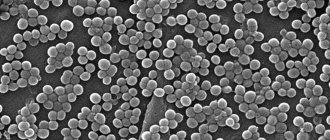Symptoms of painful shock:
- Change in body temperature.
- Loss of appetite, apathy.
- Excessive sleepiness.
- Disorders of urination and stool.
- The appearance of cough, shortness of breath.
- Intense thirst.
- The nose becomes dry and hot.
When dogs experience painful shock, there is a change in behavior.
A healthy animal is active and cheerful. He has a good appetite and regular bowel movements and urination. You must react sensitively to the slightest changes in your pet's lifestyle. It would be best to seek treatment from doctors with extensive experience in the Kotonai clinics in St. Petersburg, Pskov, and Veliky Novgorod. We recommend entrusting the treatment of your pet to professionals.
Veterinarian help
Unfortunately, pain shock is more common in dogs than you might imagine. Surgery can save your pet's life. You don’t have to worry - a good specialist will help your pet get rid of the disease forever.
Painful shock has been well studied today. If you consult a surgeon in a timely manner, you can talk about a positive prognosis. Make an appointment with a doctor at our clinic, and we will do everything possible to restore your pet’s health.
Causes of shock in dogs
Hypovolemic shock.
Blood loss. Occurs as a result of injury, surgery, or tumor rupture.
Dehydration (dehydration shock). Occurs due to the loss of water and electrolytes (vomiting, diarrhea), the transition of fluid into the third space (ascites, intestinal lumen with intestinal obstruction).
Burn shock. Loss of water, electrolytes, plasma due to severe tissue damage.
Cardiogenic shock.
A sharp decrease in cardiac output, a drop in blood pressure, and impaired blood supply to tissues. Occurs due to a violation of the contractile function of the heart.
Reasons that affect the functioning of the heart include:
Vasogenic shock.
Impaired blood supply to vital organs due to pathological regulation of peripheral vascular resistance.
Anaphylactic shock. An acute allergic reaction is one of the most dangerous complications of drug therapy.
Septic shock. The pathological mechanism is triggered by microorganism toxins (a complication of a severe infectious problem).
Obstructive shock.
The return of blood to the heart is impaired. Typical for cardiac tamponade, chest trauma with pneumothorax.
General information
Causes of anaphylaxis in dogs
Signs of anaphylactic shock in a dog
The onset of allergic shock can be recognized by various signs. They differ depending on the specific allergen, as well as its amount and the body's reaction to the intake of this substance.
In case of an allergy to chemicals entering the esophagus, the body's response will be similar to ordinary food poisoning. There will be diarrhea, vomiting, rapid heartbeat, convulsions, and increased salivation.
Severe cases of allergies provoke damage to the animal's brain and nervous system. Signs of this are the dog’s anxiety, fearfulness, increased activity, manifestations of fear, and convulsions.
IMPORTANT! The most sensitive organ in dogs is the liver. Therefore, the main symptom is indigestion.
The dog owner should immediately take the pet to the doctor if his pet exhibits the following symptoms:
I recommend: Cellulitis in dogs
NOTE! It happens that anaphylaxis is accompanied by less dangerous symptoms. But it is necessary to pay attention to all symptoms, since if the same substance is subsequently ingested into the body, the reaction may be more serious.
It is necessary to pay attention to the following symptoms of the animal’s reaction to incoming allergens:
During the development of severe forms of allergies, the dog becomes lethargic, depressed, its heart rate slows down, its blood pressure decreases, breathing becomes difficult, and coma occurs.
Causes
Various components found in the environment can cause the development of hypersensitivity in the body. The main factors in the development of anaphylaxis are:
- Poisonous insect bites. The penetration of toxins into the dog’s body systems is the most common cause of anaphylaxis. Anaphylactic shock is most often diagnosed with bites from bees, hornets, wasps, snakes or tarantulas.
- Medications. Some drugs, accumulating in the body, can provoke the development of hypersensitivity. The most common cause of anaphylactic shock is antimicrobial drugs. Muscle relaxants, painkillers, non-steroidal anti-inflammatory drugs can also provoke hypersensitivity and a specific reaction of the body in a dog.
- Hormones and some serums. Anaphylaxis develops in some animals when administered insulin or progesterone.
- Enzymes, vaccines and drugs used in the treatment of malignant tumors. Anaphylaxis is rare, but occurs in the animal’s body in response to the administration of trypsin, chymotrypsin, streptokinase. Anaphylactic shock can occur with the administration of Vincristine and Cyclosporine.
Preventing the onset of anaphylactic shock
Consequences of anaphylactic shock
Due to the fact that anaphylactic shock develops very quickly, its consequences directly depend on the speed of providing medical care to the animal.
It is possible to understand what the consequences of anaphylaxis are only after the dog’s condition has normalized. Then it will be clear whether the internal organs have been damaged and how much.
Be that as it may, if you notice symptoms of anaphylactic shock in your pet after contact with an allergen, you should immediately consult a veterinarian.
Signs
When anaphylactic shock develops in an animal, it is typical:
- side lying position;
- severe lethargy, depression;
- weak pulse, drop in blood pressure;
- tachycardia, then transition to bradycardia (slow heart rate);
- hyperventilation (fast breathing);
- respiratory failure (as the dog’s condition worsens);
- cold extremities, drop in body temperature.
Symptoms of anaphylaxis vary greatly depending on the individual characteristics of the animal's immune system. So, with a mild reaction, only severe swelling and itching in the bite area will be observed, with systemic anaphylaxis - general depression, impaired respiratory function, a drop in blood pressure and, as an extreme manifestation, a state of shock. The most severe course of the pathology occurs with parenteral administration of the antigen (bite, injection).
Anaphylactic shock can develop from a few minutes to 2 hours after contact with the allergen.
What symptoms may indicate the development of anaphylactic shock?
- severe diarrhea,
- salivation,
- vomit,
- convulsions,
- heartbeat.
Damage to the nervous system and brain, in cases where a dog has anaphylactic shock, is manifested by excessive activity, anxiety, timidity, fear, which ends in convulsions.
- Itching or redness at the contact site
- Sudden diarrhea
- Excessive delight
- Vomit
- Difficulty noisy breathing
- Fast heart rate
- Seizures
- Weak pulse
- Coma
Less serious responses are also possible. These symptoms may still be important because allergic shock may develop later or with repeated exposure to the allergen. Common signs that your dog may have allergies include:
In severe forms of an allergic reaction, the animal experiences a completely depressed state, slowed heart rate, decreased blood pressure, respiratory depression, bluish or pale mucous membranes, and coma.
Symptoms of anaphylactic shock in dogs, its treatment and consequences: Review + Video
In the modern world, almost all products contain various additives, dyes, preservatives and flavors. Some of these additives often provoke allergic reactions in dogs, as well as other animals. Allergies in dogs and cats are becoming more and more common. The most serious reactions can even result in anaphylactic shock in dogs.
What is anaphylactic shock? This is the strongest reaction of the body, which gains momentum very quickly. It develops when an allergic substance accumulates in the body and its subsequent penetration into the body. The possibility of death from the onset of anaphylaxis is not uncommon.
Symptoms of shock
A dog in shock has extremely low blood pressure. It may exhibit any or all of the following symptoms:
Early stages
- Fast heartbeat
- Anxious or excited
- Bright red gums
- Shallow breathing
- Pulse is still easy to find
Middle stages
- Heart rate even higher
- Gums become pale or blue
- Pulse is hard to find
- The dog plunges into lethargy, it seems like a week
- Breathing usually becomes rapid and shallow (but may remain normal)
- Low rectal temperature (but may rise or remain normal)
Later stages
- Gums appear almost white or may be mottled
- The heart rate usually increases or appears irregularly, but may remain normal or below normal as the dog's heart muscle begins to fail.
- Weak impulse, difficult if not impossible to find
- Change in breathing; can be slow and shallow or fast and deep.
- Eyes appear glazed and unfocused
- Dog slips from lethargy to stupor to coma
- Rectal temperature drops to a critical minimum
Other diseases What to do if your dog is in shock
Serious injuries are almost always accompanied by shock. In this condition, the body's nervous system is seriously depressed, which can result in death. But if you provide timely assistance to your own dog, he can be saved. In this article you will learn about what methods are used to eliminate shock, what symptoms it has, as well as how qualified veterinarians deal with the problem. The symptoms of shock are quite simple. The dog is very excited, practically does not respond to the owner’s call and other external stimuli. Due to shock, the pet can easily bite anyone who approaches it. The skin becomes very cold, the pulse and breathing increase sharply, making it seem as if the pet is suffocating and is about to faint. The next symptom is the color of the mucous membranes of the mouth. They take on a bluish tint, which almost always indicates that the dog is under the influence of a state of shock. What do we do in this case? First of all, you need to pull yourself together and calm down. Yes, injuries come in a wide variety of forms, and not all of them can be responded to calmly. The life of your pet depends on your composure at the moment, so panic is simply prohibited. We begin to calm the dog down with gentle and gentle stroking from the head to the lower back. You need to speak in a quiet, calm voice. It would be best to pronounce your pet's name, since this is the only word that the dog knows and perceives best. After this, you need to take a warm, soft blanket and wrap the animal. This will allow him to warm up, restore his usual temperature, and normalize his heart rate and breathing. When contacting a veterinarian, a special medicine is administered at the rate of 2-8 mg per 1 kg of body. If you know how to give injections and know medications that relieve shock, then you can do this procedure yourself. After the medicine has been administered, the pet must be given a sedative or sleeping pill, then taken to its favorite bed and allowed to sleep. Sleep in this case is probably the best medicine that will restore the nervous system. After your pet wakes up, he may not feel very well, but this is a clear sign that the condition is returning to normal. It is quite possible that you will lose your appetite, desire to play, etc. It is necessary to give the dog time to fully recover from the shock. The next stage is the stage of oppression, which is formed due to help not being provided on time. How is it characterized? The pet lies and does not respond to external stimuli. The gaze is empty; if you look at the animal, it will respond by looking “through” you. The body is very cold, the mucous membranes become very pale, the muscles are almost completely relaxed. The temperature drops very much, and breathing becomes uneven and shallow. The stage of oppression very often leads to death precisely because of the panic of the owners. Not everyone knows what to do in such a situation. Again, we get rid of panic and begin to joyfully and loudly talk to our pet, constantly saying its name. The paws are rubbed vigorously, and alternatively, heating pads or hot water bottles can be applied to the paws. The knuckles begin to gently rub the pet's back along the spine. It is also necessary to show your pet objects to which he previously reacted very actively. These include your favorite toys or the cat with whom the dog lives next door. This is the only way to get an animal out of such a dangerous state, so there can be no room for personal panic.











